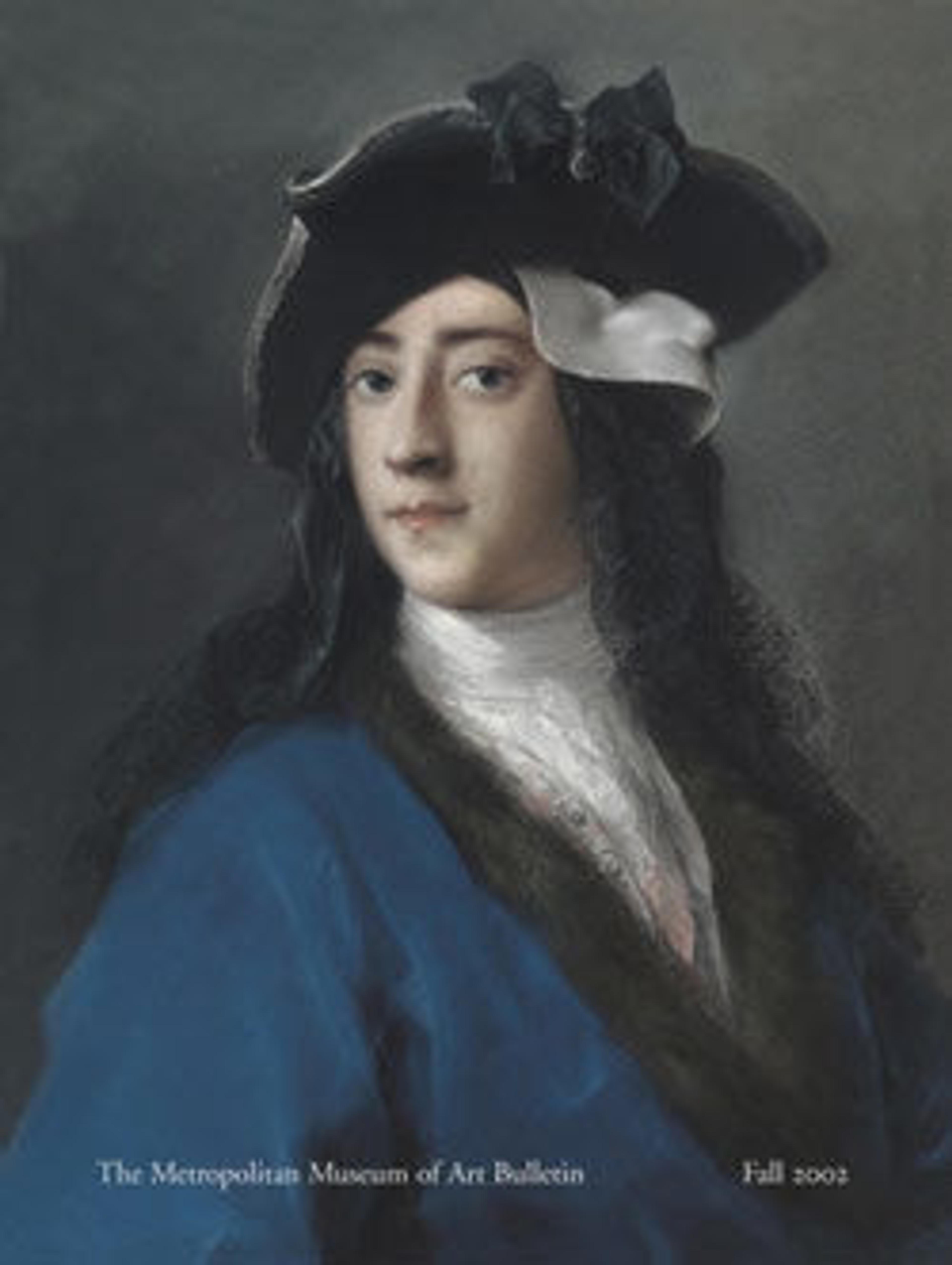Gold Bracteate
This thin gold pendant, known as a bracteate, displays a deft and spirited design defined by bold, sweeping lines. The central face exemplifies the exuberant, highly abstact style of early medieval Scandinavian artists. The border zone, formed by intricate and orderly rows of repeated punchwork, reveals the great technical competency of goldsmiths working in northern Europe during the fifth and sixth centuries.
The manufacture of bracteates probably originated with Roman and Byzantine portrait medallions, presented by the emperor as gifts to important figures. Here, however, the imperial image has been transformed into the depiction of a god, perhaps Odin, chief of Nordic pantheon; his oversize face is balanced atop a galloping horse with horns. With their fine workmanship and allusions to the Roman and Byzantine worlds, gold bracteates conveyed both the sophisticated taste and the high social status of their owners, who wore them as fine jewerly and hoarded them as treasure.
The manufacture of bracteates probably originated with Roman and Byzantine portrait medallions, presented by the emperor as gifts to important figures. Here, however, the imperial image has been transformed into the depiction of a god, perhaps Odin, chief of Nordic pantheon; his oversize face is balanced atop a galloping horse with horns. With their fine workmanship and allusions to the Roman and Byzantine worlds, gold bracteates conveyed both the sophisticated taste and the high social status of their owners, who wore them as fine jewerly and hoarded them as treasure.
Artwork Details
- Title: Gold Bracteate
- Date: 400–600
- Culture: Scandinavian
- Medium: Gold
- Dimensions: 1 7/8 x 1 3/4 x 3/16 in. (4.8 x 4.4 x 0.4 cm). .3oz (8g)
- Classification: Metalwork-Gold
- Credit Line: Purchase, Gift of Dr. Mortimer D. Sackler, Theresa Sackler and Family, and John W. Byington Trust Gift, 2001
- Object Number: 2001.583
- Curatorial Department: Medieval Art and The Cloisters
More Artwork
Research Resources
The Met provides unparalleled resources for research and welcomes an international community of students and scholars. The Met's Open Access API is where creators and researchers can connect to the The Met collection. Open Access data and public domain images are available for unrestricted commercial and noncommercial use without permission or fee.
To request images under copyright and other restrictions, please use this Image Request form.
Feedback
We continue to research and examine historical and cultural context for objects in The Met collection. If you have comments or questions about this object record, please contact us using the form below. The Museum looks forward to receiving your comments.
